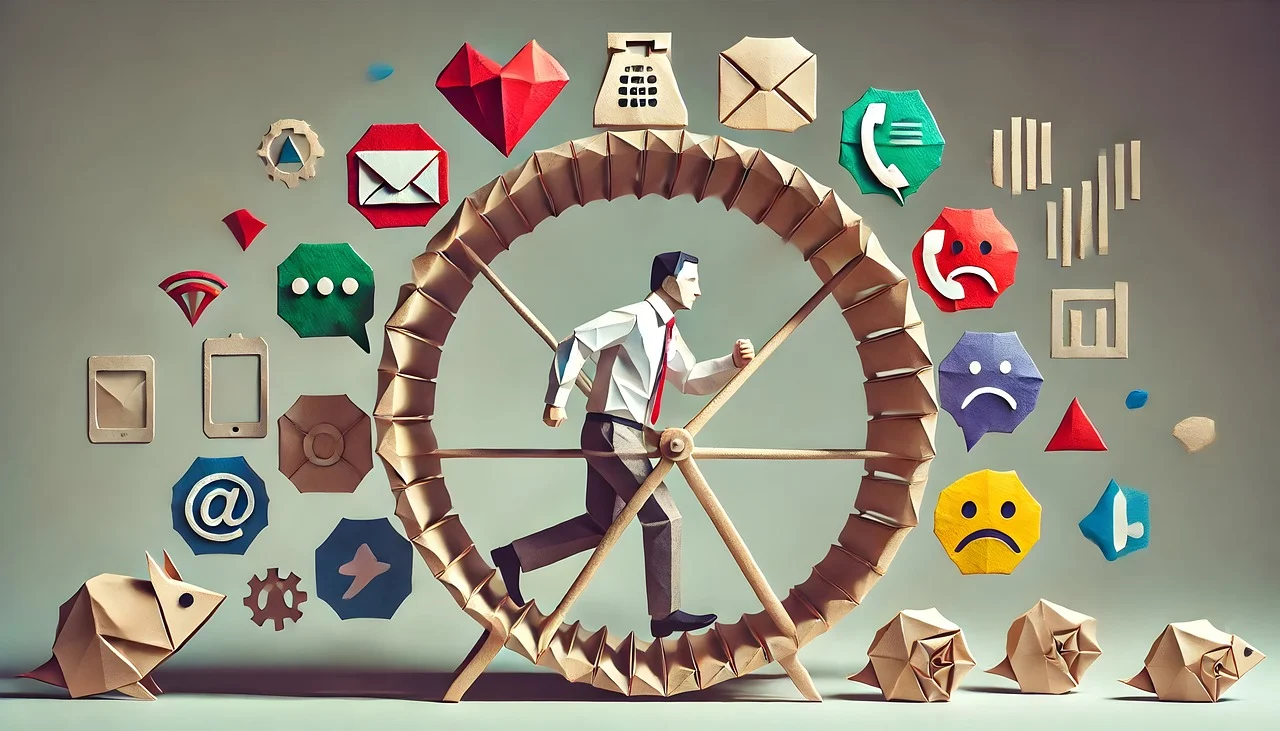Perspective of an occupational health doctor: brain-friendly work and stressors at (work)life
Jan 28, 2025
In my previous blog I shared my journey as an occupational health doctor, as a manager, and as a leader towards the path of entrepreneurship in Hyvää Elämää. In this blog, I focus on what (work)life looks like from the perspective of an occupational health doctor and why more and more people are struggling with harmful stress and are not able to do their normal at work. The explanation is simple, yet infinitely complex. (Work) life has become very complicated, and the endurance of our brain has been put to the test, causing harmful stress and mental health issues.
Stress factors in (work) life and their impact on stress levels and brain health
Unfortunately, our brains have not evolved nearly as quickly as the world around us. Although we live in a digital and technological era, our brains still largely function like our ancestors’ who lived on the savanna. Practically, this means that, due to systems embedded in the brain, our brains tend to become overloaded in harmful ways in the pace of modern life.
In the past, human life was threatened by wild animals or enemies outside the cave or the lack of food. Nowadays, stress responses are triggered by completely different things, but the brain reacts to changes and stress in the same way as it did when threats were physical and immediate.
Every human being is born with a given genetic package and a set of primitive instincts, including the instinct to avoid danger. By the way, for the brain change equals danger. Everything that happens to us after birth affects what kind of personal attributes we get and person we become. What kind of environment do we grow up in, and what kind of experiences happen on our path has an impact. Some people sail through life with ease, but others are tested a lot more than anyone wishes.
The complexity of work life and burnout: why individual support is key to employee well-being?
When machines did the work, work life was more simple and easier to manage/lead. As long as you bought a good machine and took care of its annual maintenance, you knew that it would run reliably and consistently, week after week, month after month.
But now, you have a human being doing the tasks. As technology has advanced, work has become increasingly complex, requiring much more brain energy. I dare to say that artificial intelligence will further accelerate this change.

When humans are doing the work, they are not copies of each other, even if their age, gender, education, and work experience are identical. Meaning, they also get stressed by different things in different ways.
This individuality is very important to keep in mind when thinking about how managers can support their employees. One size really does not fit all.
In our training program we will cover in more detail how the brain works and how to lead work without harmful brain overload, also taking care of your own stress levels.
Three key factors behind harmful stress
Point 1: Life Happens
Human life is not all smooth sailing. Traffic years, someone close to you falling ill or passing away, personal health challenges, the need to help aging parents, loneliness, relationship issues, problems with children, problems at work, financial concerns, the unstable world politics, just to mention a few – all of these stress the mind, and the brain.
When these issues persist, they start to impact sleep and decrease energy, and work ability. We only have one brain, and it can and will become overloaded by work or personal life challenges or many times both.
Point 2: Personal attributes at work
In my work as an occupational doctor, I often meet employees who have certain "default settings" that make them vulnerable to harmful stress, even burnout. For example, if employees are requiring a lot from themselves, having high demands on their own performance, it can lead to harmful stress, especially if the employee cannot find ways to set limits or does not receive support for what is good enough or what should be prioritized, and even more specifically out- prioritized.
Managing one’s own work is not easy even to highly educated people. This skill is not also stable or constant but varies over time and stress levels.
Point 3: Leadership and its role in managing work related stress levels, thus brain health and recovery
The role of the managers has become more and more complex. In addition to setting direction and tracking results, the manager's job nowadays includes monitoring employee stress levels and supporting their well-being, many times together with operational responsibilities.
Everyone’s contribution is needed for brain-friendly work
Endurance in work life does not just happen; it is the result of knowing what stresses us at work and why, and making the right choices when managing people instead of machines. Managers’ own well-being and leadership, brains in mind, are crucial when building a healthy workplace community, both for their own stress levels and for their team success.

If you want to ensure the managers in your company are doing well and capable of leading with brain-friendly practices, get in touch. I am happy to help you to develop your organization's/team's performance without causing harmful, work related stress. As an outcome, the entire organization/team thrives.
Give me a call or send me an e-mail - let’s discuss how we can help your managers and employees to take care of their work ability and performance in a way that is not putting their brains under harmful stress!
With regards, brain in mind
Anna-Mari
